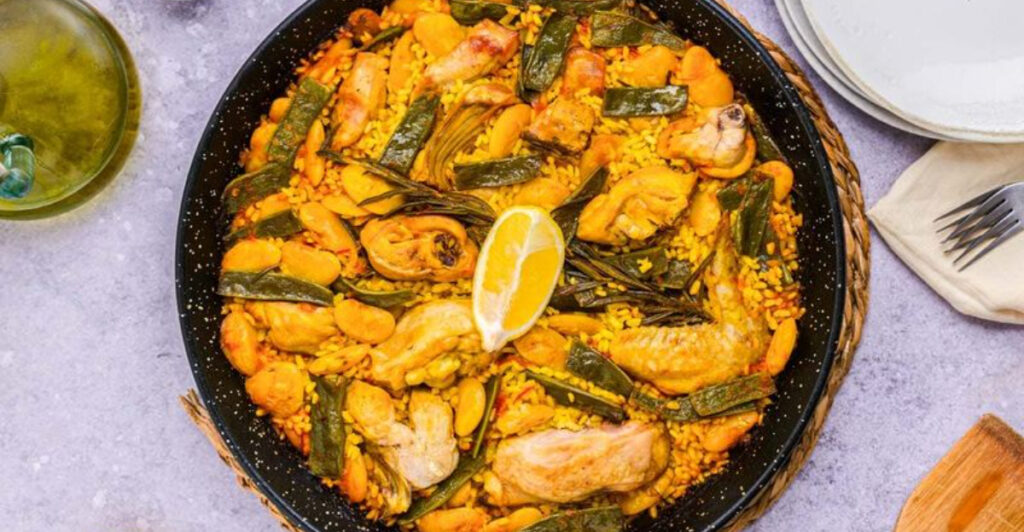Food tells the story of a nation better than any history book. Each country has that one special dish that captures its heart, history, and soul on a single plate. From Japan’s delicate sushi to Jamaica’s vibrant ackee and saltfish, these culinary treasures represent centuries of tradition, local ingredients, and cultural pride that define entire nations.
1. Japan: Sushi

Raw fish on rice might sound simple, but sushi represents centuries of Japanese craftsmanship. Master sushi chefs train for decades to perfect their knife skills and rice preparation.
Tokyo’s famous Tsukiji Market offers the freshest nigiri experience, where tuna auctions happen at dawn. The delicate balance of vinegared rice, pristine fish, and wasabi creates pure harmony in every bite.
Real sushi focuses on the fish’s natural flavor rather than heavy sauces. Each piece should be eaten immediately after preparation to experience the perfect temperature contrast between warm rice and cool fish.
2. Italy: Pasta Carbonara
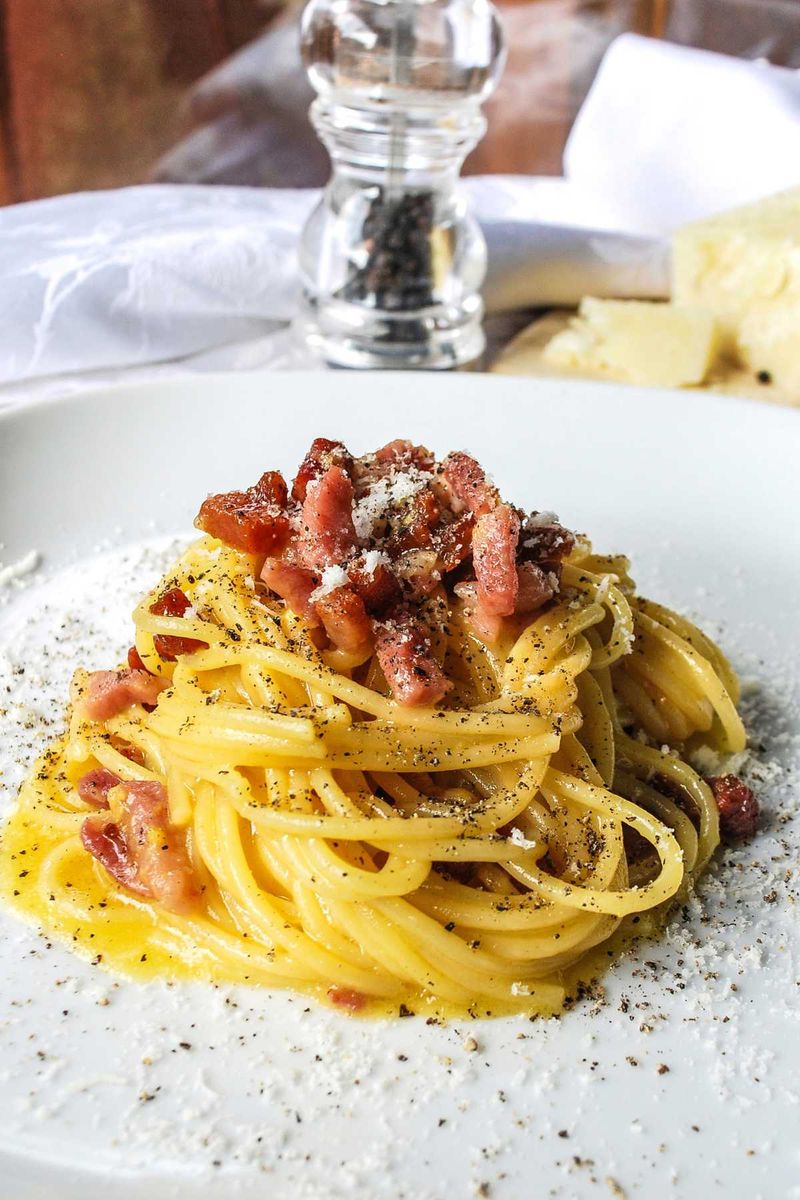
Roman carbonara breaks hearts when made wrong, but sung angels when prepared correctly. No cream belongs in this dish – just eggs, pecorino cheese, guanciale, and black pepper create the silky sauce.
The secret lies in timing and temperature. Hot pasta water slowly tempers the egg mixture, creating a velvety coating without scrambling. Guanciale (pork jowl) provides the essential fat and flavor that bacon simply cannot match.
Romans take their carbonara seriously, often refusing to eat versions made elsewhere. The dish originated as hearty fuel for charcoal workers, hence the name meaning “charcoal style.”
3. Mexico: Mole Poblano
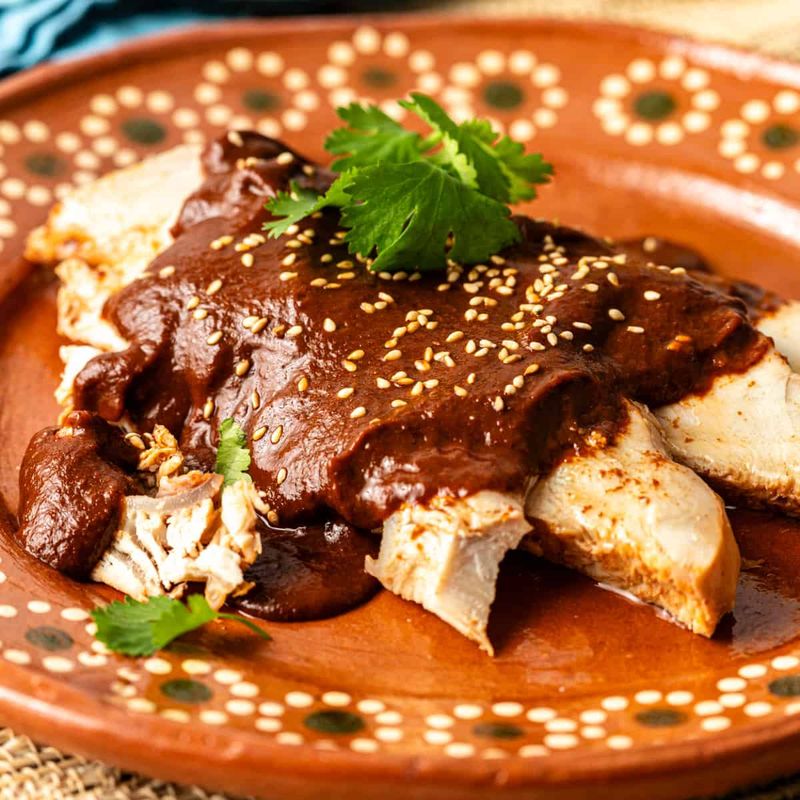
Twenty-plus ingredients create Mexico’s most complex sauce, including chocolate, various chilies, nuts, and spices. Puebla claims ownership of this culinary masterpiece that takes days to prepare properly.
Legend says nuns at Convent of Santa Rosa invented mole to impress a visiting bishop. The chocolate adds depth rather than sweetness, balancing the heat from multiple chili varieties.
Authentic mole requires grinding ingredients by hand using a molcajete (stone mortar). Families guard their secret recipes, passing down techniques through generations. The sauce should coat turkey or chicken like liquid velvet.
4. Thailand: Pad Thai
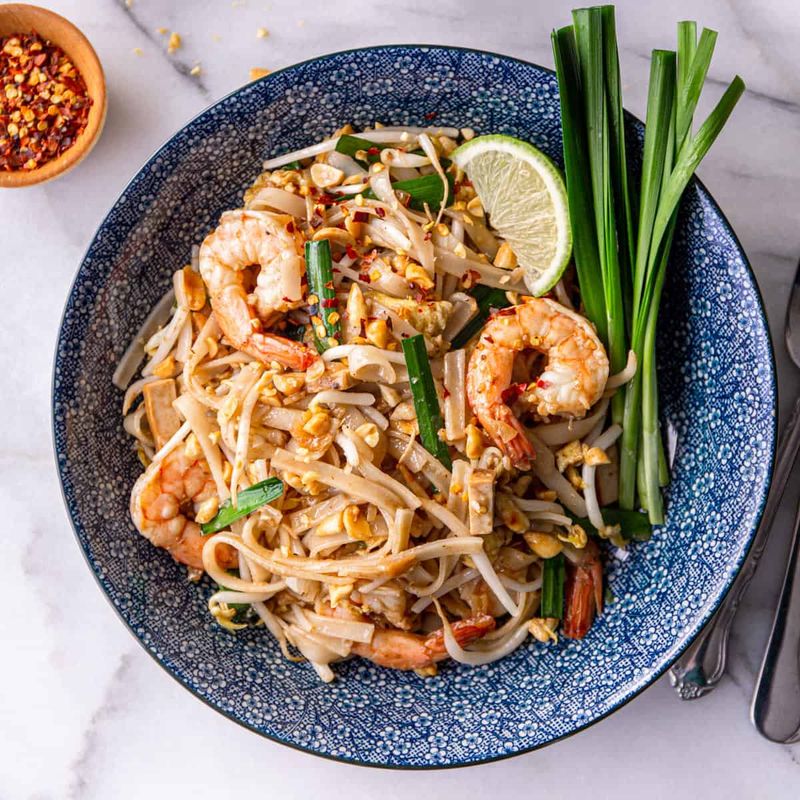
Bangkok’s streets come alive with the sizzle of pad thai woks, where sweet, sour, and nutty flavors dance together. Tamarind paste provides the signature tangy base that makes this dish addictive.
Street vendors master the perfect balance of fish sauce, palm sugar, and lime juice. Rice noodles must be soaked just right – too soft and they become mushy, too firm and they won’t absorb the flavors.
Authentic pad thai includes dried shrimp, preserved radish, and bean sprouts for texture. The dish gained popularity in the 1930s as part of Thailand’s national identity campaign, becoming their unofficial culinary ambassador worldwide.
5. India: Butter Chicken (Murgh Makhani)
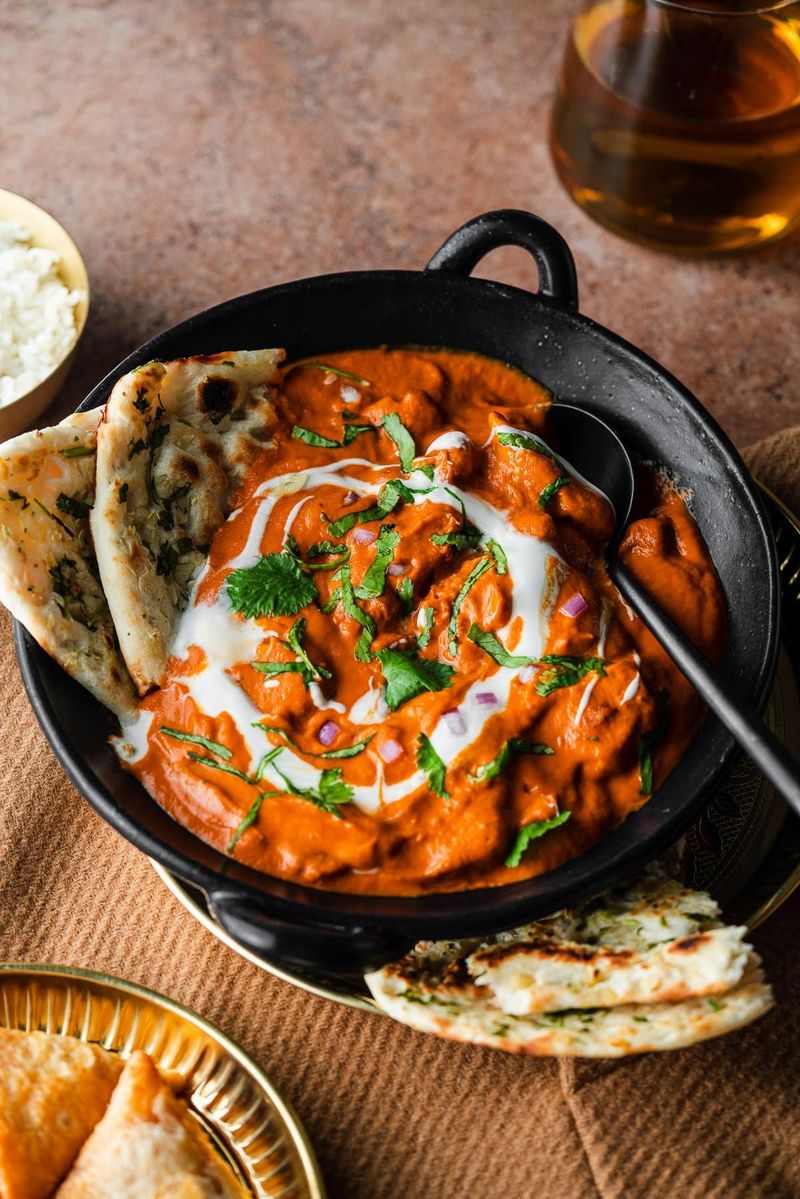
Delhi’s Moti Mahal restaurant accidentally created this beloved dish in the 1950s when leftover tandoori chicken met tomato sauce and cream. The result became India’s most famous export.
Tender chicken pieces swim in a velvety tomato-based sauce enriched with butter and cream. Garam masala, fenugreek leaves, and ginger-garlic paste create the aromatic foundation that makes this curry irresistible.
The dish should be mildly spiced to appeal to international palates while maintaining authentic Indian flavors. Served with basmati rice or naan bread, butter chicken introduces many people to Indian cuisine’s rich complexity.
6. France: Boeuf Bourguignon
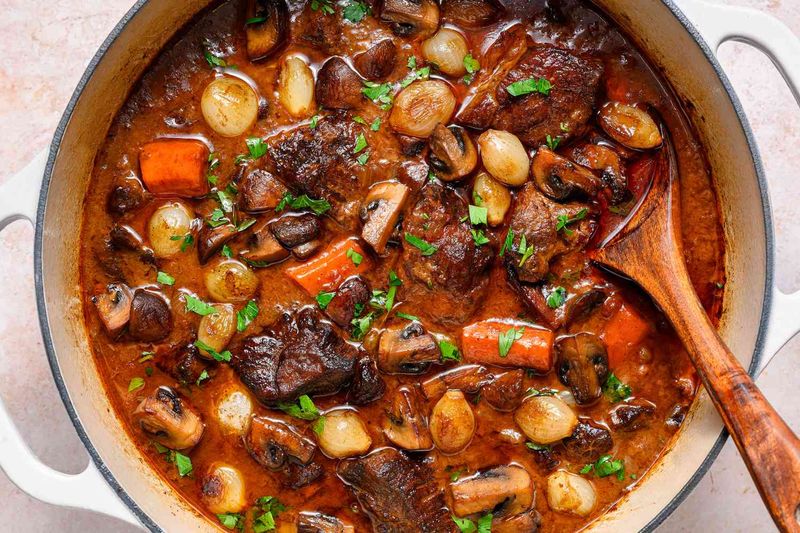
Burgundy wine transforms tough beef into fork-tender perfection in this quintessential French comfort dish. Slow cooking allows flavors to meld into something greater than their individual parts.
Julia Child made this dish famous in America, but French grandmothers have been perfecting it for centuries. Pearl onions, mushrooms, and lardons add texture while the wine reduction creates a glossy, rich sauce.
The key lies in browning the meat properly and using quality Burgundy wine – never cook with wine you wouldn’t drink. Traditional preparation takes hours, but the aromatic rewards are worth every minute of patient cooking.
7. Spain: Paella
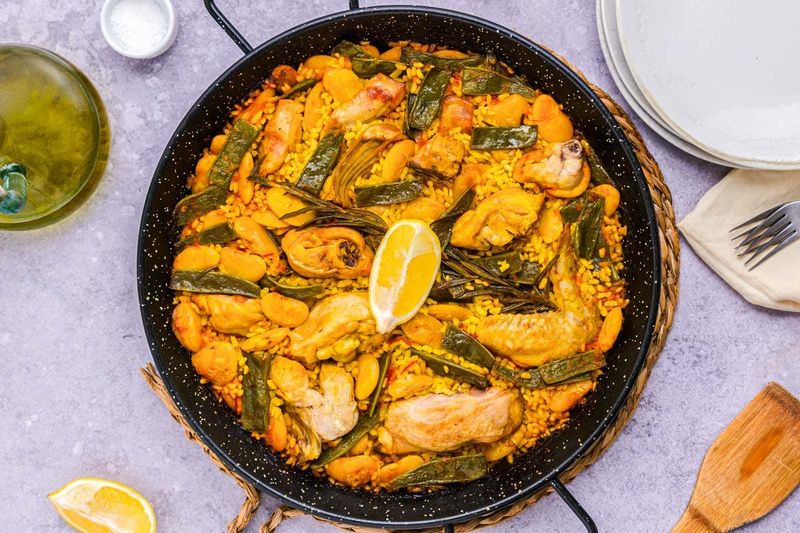
Valencia’s saffron-scented rice dish sparked countless debates about authenticity. Traditional paella valenciana contains rabbit, chicken, beans, and snails – no seafood in sight, despite popular belief.
The wide, shallow paellera pan allows rice to cook in a single layer, creating the coveted socarrat (crispy bottom). Saffron threads provide the golden color and distinctive earthy flavor that defines real paella.
Seafood paella exists but represents coastal adaptations rather than the original. Valencians take their paella seriously, often refusing versions with chorizo or mixed proteins. The dish brings families together for Sunday gatherings throughout Spain.
8. Vietnam: Pho
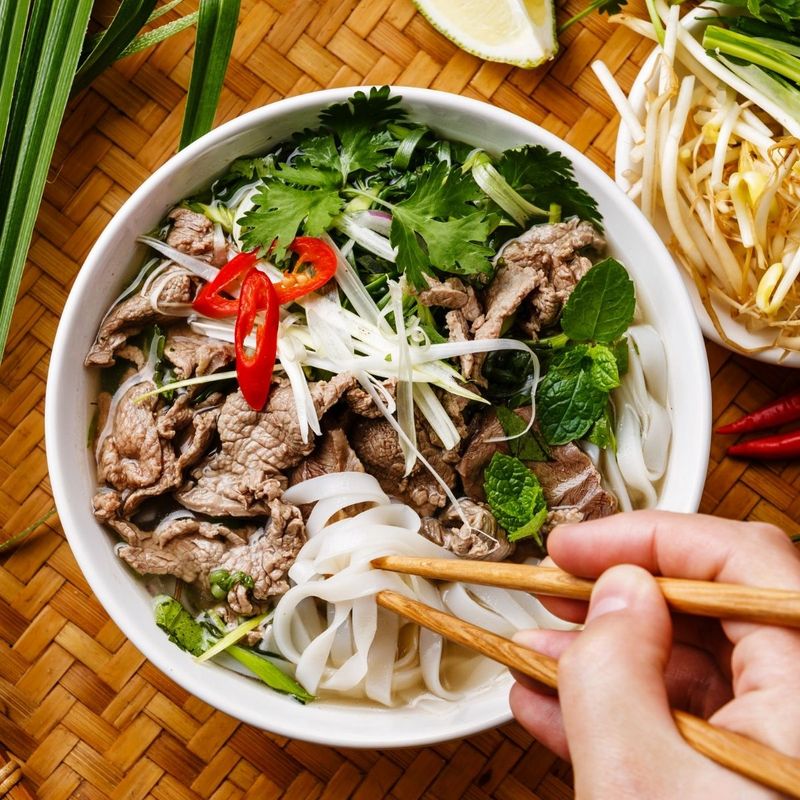
Hanoi’s Pho Thin serves the most authentic version of this aromatic noodle soup that captures Vietnam’s soul in a bowl. The clear broth requires hours of simmering beef bones with star anise and cinnamon.
Fresh herbs like cilantro, Thai basil, and mint accompany every bowl, allowing diners to customize their experience. Rice noodles should be silky smooth, while thin beef slices cook instantly in the hot broth.
Morning pho differs from evening versions – breakfast bowls tend to be simpler and more refined. The dish represents Vietnam’s French colonial influence merged with local ingredients and techniques, creating something uniquely Vietnamese.
9. Brazil: Feijoada

Wednesday and Saturday afternoons belong to feijoada in Brazil, where families gather for this hearty black bean and pork celebration. The stew requires multiple cuts of pork, including ears, tails, and ribs.
Slow cooking transforms tough cuts into tender morsels while black beans absorb smoky flavors. Orange slices and farofa (toasted cassava flour) provide fresh contrast to the rich, heavy stew.
Rio de Janeiro claims the best feijoada, though every region adds its own twist. The dish originated from Portuguese influences mixed with African cooking techniques, representing Brazil’s multicultural heritage in every spoonful of this weekend tradition.
10. Greece: Moussaka
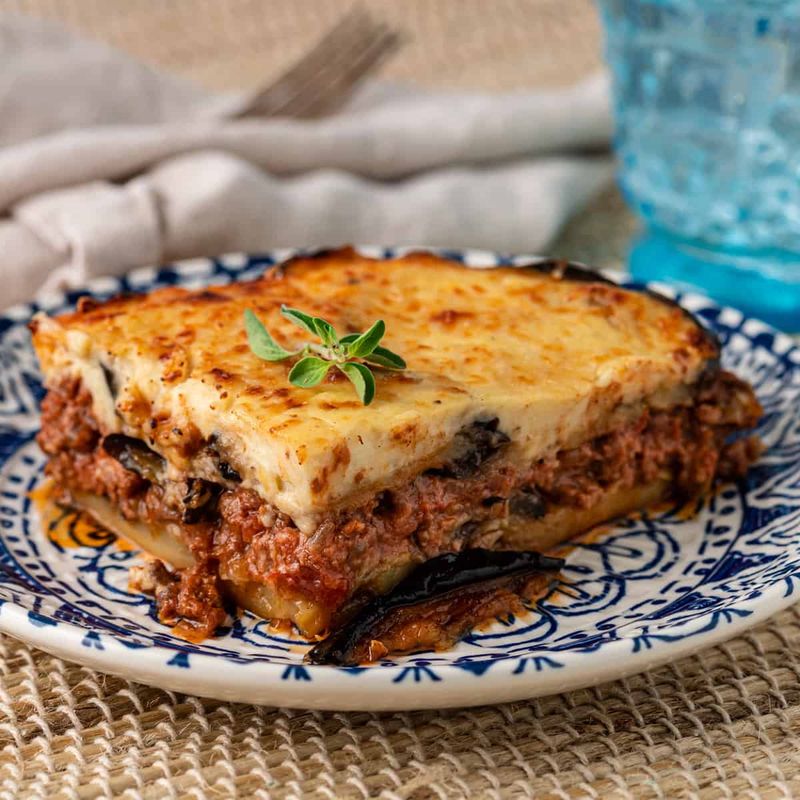
Layers tell the story in Greece’s most famous casserole, where eggplant, spiced meat, and béchamel sauce create the “Greek lasagna.” Each component requires separate preparation before final assembly.
Salting and grilling eggplant removes bitterness while creating the perfect texture. The meat layer combines lamb or beef with tomatoes, onions, and warm spices like cinnamon and allspice.
Béchamel sauce tops everything, creating a golden crown when baked. Traditional recipes call for kefalotiri cheese, though many modern versions use Parmesan. The dish needs resting time after baking to set properly, making patience essential for perfect moussaka.
11. Morocco: Tagine
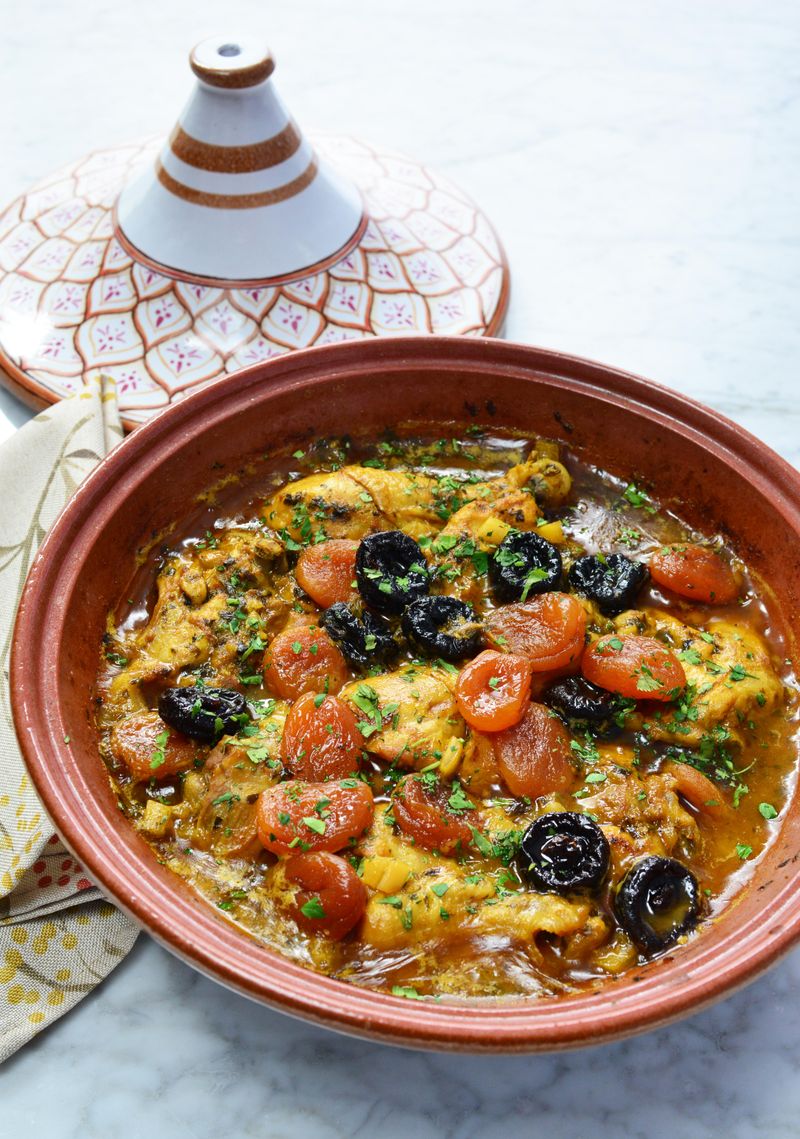
The conical clay pot gives this dish its name while creating perfect steam circulation for tender, flavorful results. Lamb, apricots, and warm spices like cinnamon and ginger create Morocco’s signature flavors.
Slow cooking allows tough meat to become fork-tender while dried fruits add natural sweetness. The tagine pot’s unique shape returns condensation to the ingredients, preventing drying during long cooking times.
Preserved lemons and olives often accompany meat tagines, providing bright acidity to balance rich flavors. Berber cooking techniques passed down through generations make each family’s tagine recipe slightly different, reflecting Morocco’s diverse regional influences and ancient culinary wisdom.
12. Peru: Ceviche
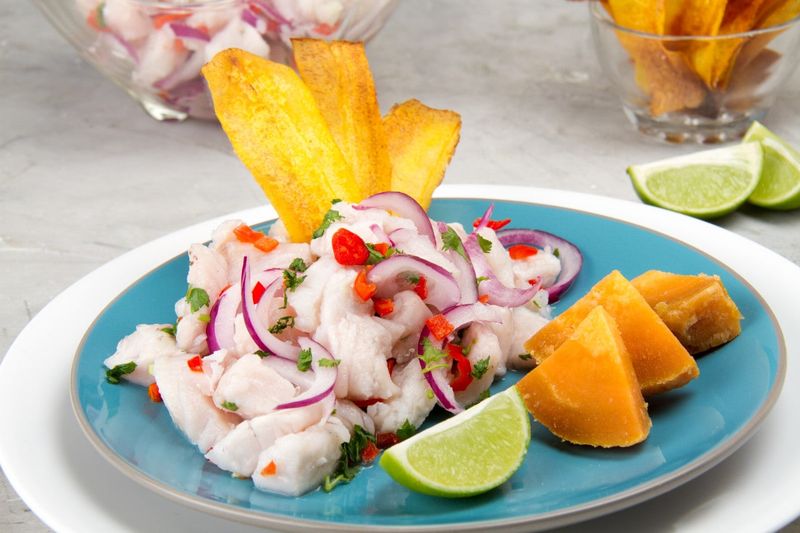
Lima’s coastal waters provide the freshest fish for Peru’s national dish, where citrus acids “cook” raw seafood without heat. The technique requires precise timing and impeccable ingredient quality.
Tiger’s milk (leche de tigre) – the acidic marinade – contains lime juice, aji peppers, onions, and garlic. This liquid gold is often consumed as a hangover cure or aphrodisiac.
Fresh fish must be day-boat caught and properly handled. Red onions, sweet potato, and corn kernels provide texture and sweetness to balance the acidic fish. Preparation happens moments before serving, as over-marinated fish becomes tough and unpalatable.
13. Turkey: Kebap (Adana or Iskender)
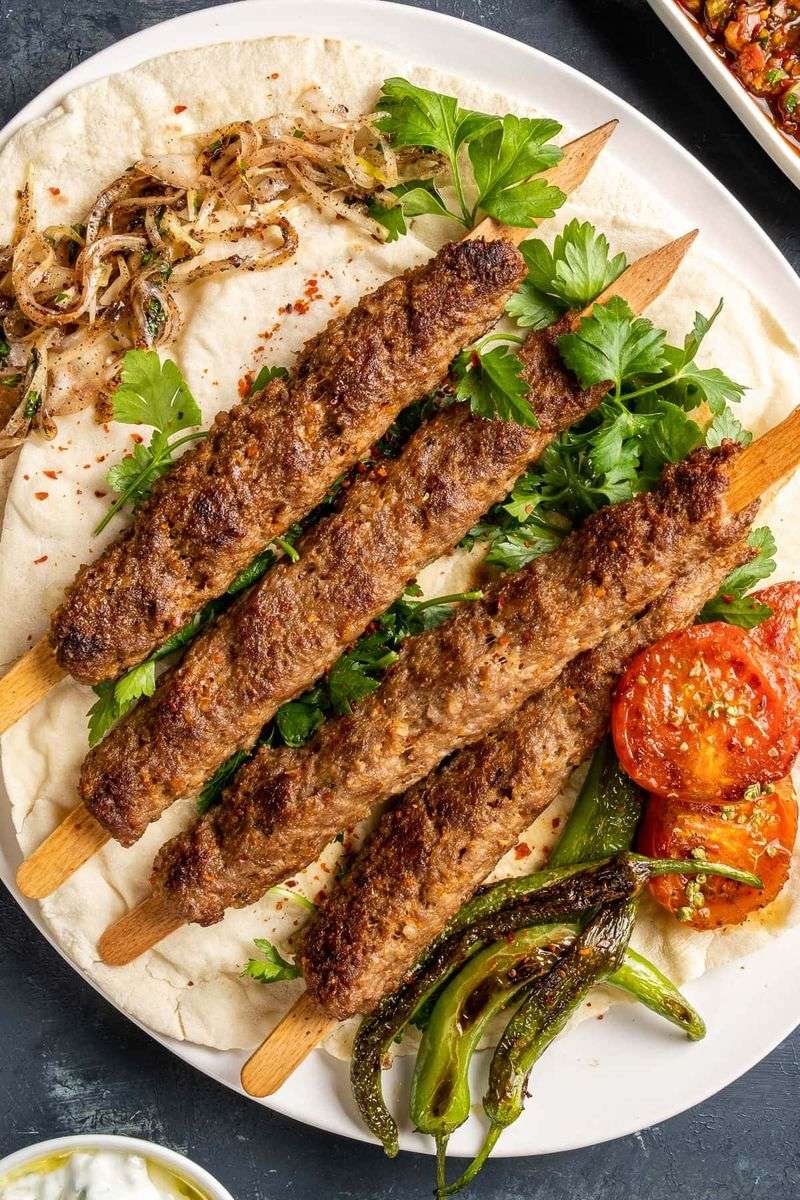
Adana’s spicy minced meat skewers represent Turkey’s kebab mastery, while Iskender kebap from Bursa features döner meat over bread with yogurt and tomato sauce. Both showcase Turkish grilling expertise.
Hand-minced lamb mixed with tail fat creates Adana kebap’s distinctive texture and flavor. The meat must be kneaded extensively to achieve proper binding without using eggs or breadcrumbs.
Iskender kebap layers thinly sliced döner meat over pide bread, topped with tomato sauce, yogurt, and melted butter. The contrast of temperatures and textures makes each bite complex and satisfying, representing centuries of Ottoman culinary refinement.
14. South Africa: Bobotie

Cape Malay heritage shines through this spiced minced meat casserole topped with savory egg custard. Sweet and savory elements blend in ways that surprise first-time tasters.
Curry powder, dried fruit, and almonds reflect the dish’s Malaysian and Indonesian influences brought by 17th-century slaves. The meat mixture includes bread soaked in milk for moisture and texture.
Bay leaves traditionally garnish the golden egg topping before baking. Yellow rice and chutney accompany bobotie, creating a complete meal that represents South Africa’s complex cultural heritage. The dish tells the story of forced migration and culinary adaptation in every flavorful bite.
15. Argentina: Asado

Sunday asados bring Argentine families together around the parrilla (grill) for hours of slow-cooked meat and conversation. The grill master (asador) commands respect and patience from hungry guests.
Various cuts including ribs, chorizo, morcilla (blood sausage), and chicken cook over wood or charcoal. Chimichurri sauce – made with parsley, garlic, vinegar, and oil – provides the traditional accompaniment.
The cooking process becomes a social event lasting several hours. Meat quality matters more than seasoning, as Argentine beef’s natural flavor needs little enhancement. Sharing asado represents Argentine hospitality and the importance of family gatherings in their culture.
16. South Korea: Kimchi Jjigae
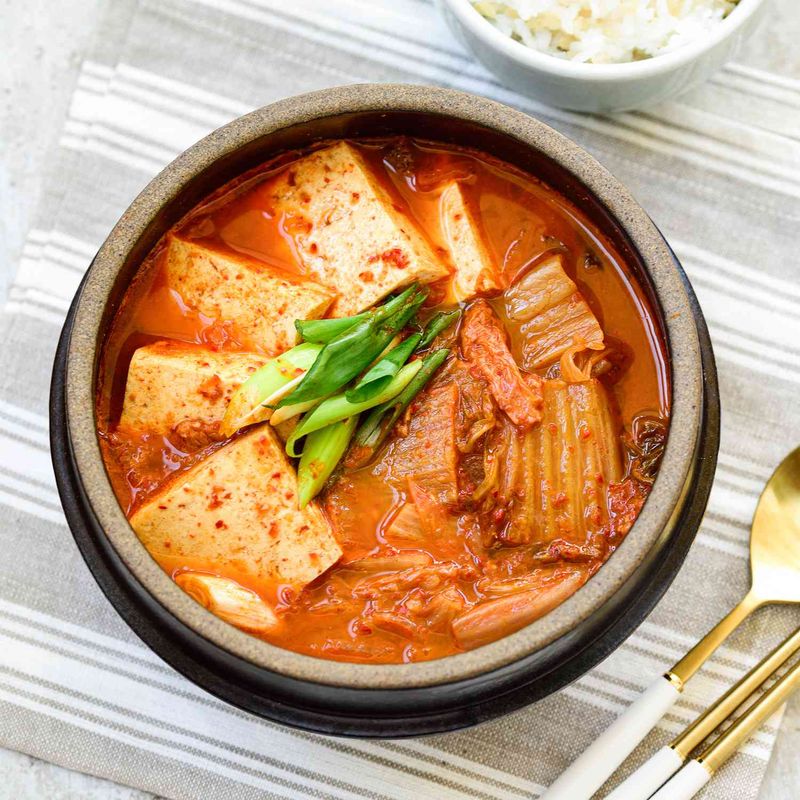
Fermented kimchi transforms into Korea’s ultimate comfort food when simmered with pork or tofu in this spicy, sour stew. The longer kimchi ferments, the more complex the jjigae becomes.
Gochugaru (Korean chili flakes) provides heat while fermented kimchi adds probiotics and deep umami flavors. Pork belly or shoulder works best, though vegetarian versions use tofu or mushrooms.
The stew tastes better the next day as flavors continue developing. Served with steamed rice and banchan (side dishes), kimchi jjigae represents Korean home cooking at its finest. Every Korean household has their own variation passed down through generations.
17. Portugal: Bacalhau à Brás
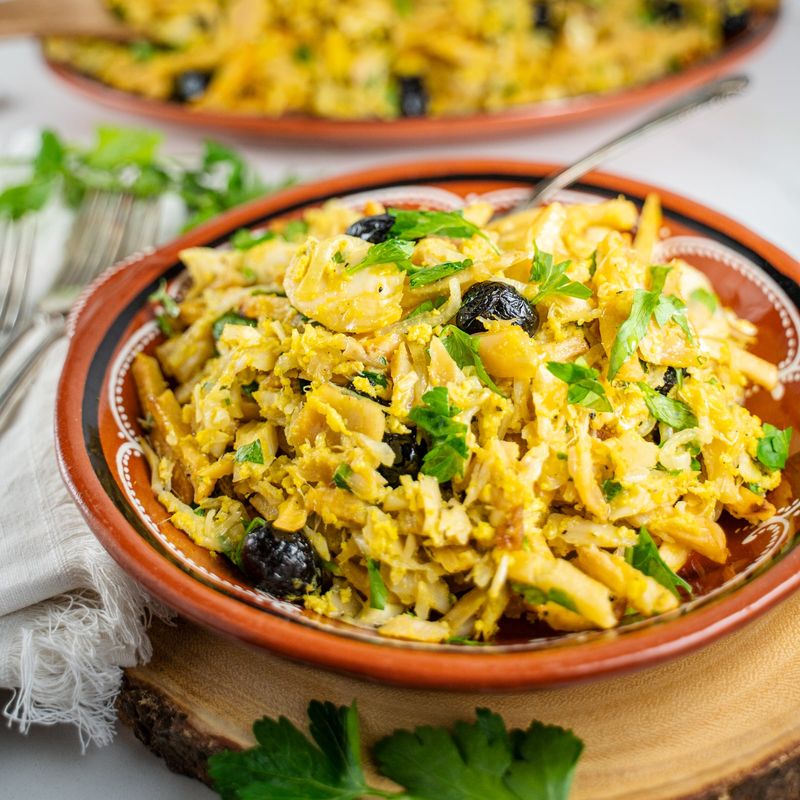
Lisbon’s favorite comfort food combines salted cod with scrambled eggs, onions, and shoestring potatoes in perfect harmony. Portugal claims 365 ways to prepare bacalhau – one for each day.
Salted cod must be soaked for days to remove excess salt while maintaining the fish’s firm texture. The dish requires careful timing to prevent overcooking the eggs while keeping potatoes crispy.
Black olives and parsley provide color and flavor contrast to the golden mixture. This humble dish represents Portugal’s maritime history and their mastery of salt cod preservation techniques developed during the Age of Exploration.
18. Ethiopia: Injera with Wat
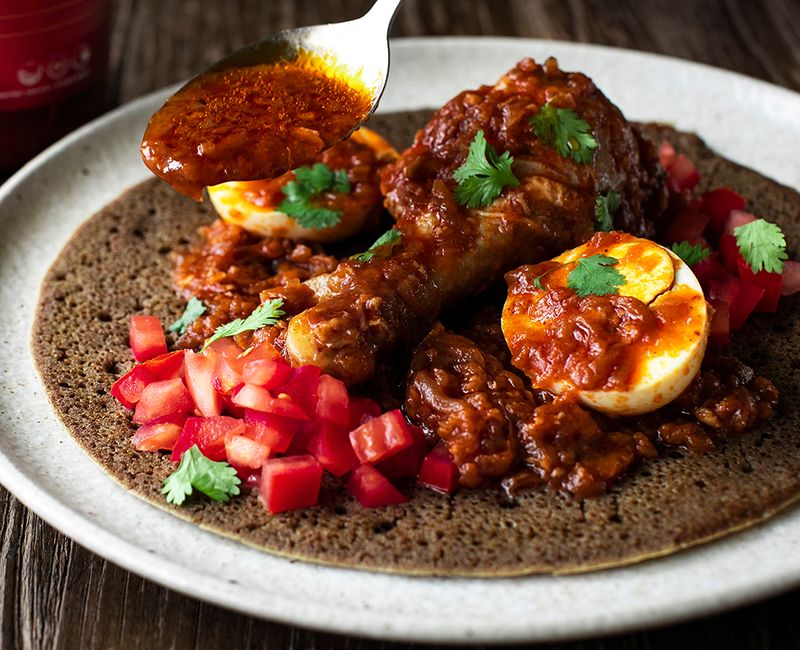
Spongy sourdough flatbread serves as both plate and utensil for Ethiopia’s spicy stews called wat. The fermented teff flour creates injera’s distinctive tangy flavor and sponge-like texture.
Berbere spice blend – containing chilies, fenugreek, and numerous other spices – forms the base for most wats. Doro wat (chicken) and kitfo (raw beef) represent the most celebrated preparations.
Eating with hands is traditional and practical, as injera’s texture perfectly absorbs stew juices. The communal aspect of sharing from one large injera brings people together, reflecting Ethiopian values of community and hospitality in their ancient culinary traditions.
19. Lebanon: Kibbeh
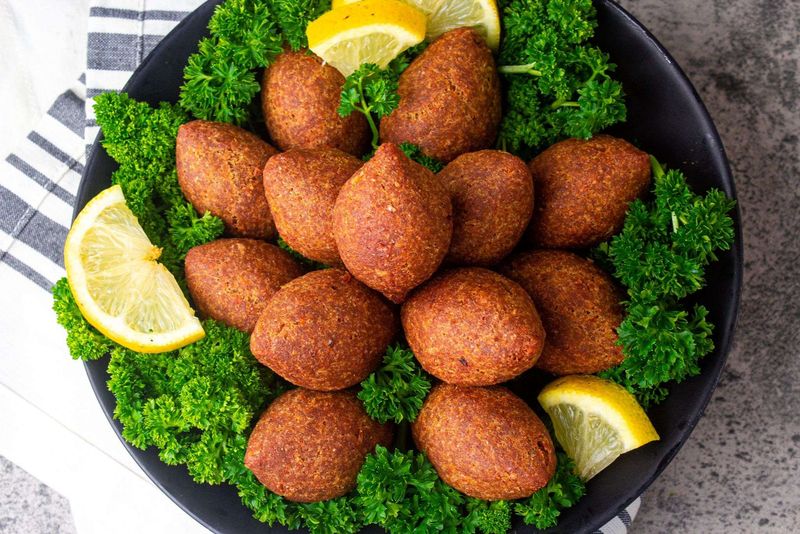
Lebanon’s national treasure combines bulgur wheat with spiced lamb or beef in various forms – fried, baked, or raw. The preparation requires skill to achieve the perfect bulgur-to-meat ratio.
Traditional kibbeh features a bulgur shell stuffed with seasoned meat, pine nuts, and onions. The mixture must be kneaded extensively to create smooth, crack-free shells before frying to golden perfection.
Raw kibbeh (kibbeh nayyeh) showcases the highest quality lamb mixed with fine bulgur and spices. Each Lebanese family guards their kibbeh recipe, with techniques passed down through generations representing centuries of Levantine culinary expertise and cultural pride.
20. Jamaica: Ackee and Saltfish

Jamaica’s national dish pairs the creamy ackee fruit with flaked salted cod in a breakfast that fuels the island. Ackee must be properly ripened – unripe fruit contains dangerous toxins.
Saltfish requires overnight soaking to remove excess salt before flaking into bite-sized pieces. Scotch bonnet peppers, onions, and tomatoes complete this colorful, flavorful combination that represents Jamaica’s culinary heritage.
The dish originated from the marriage of indigenous ingredients (ackee) with imported preserved fish brought by European colonizers. Served with fried dumplings, plantain, or bread, ackee and saltfish embodies Jamaica’s complex history and vibrant food culture.

